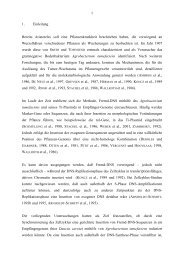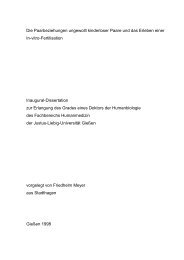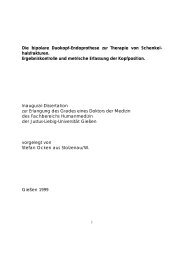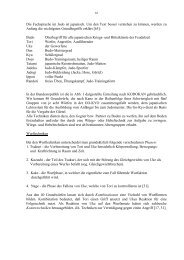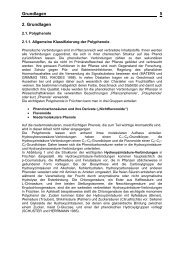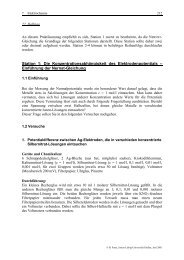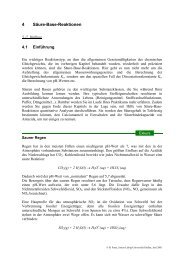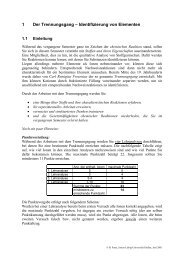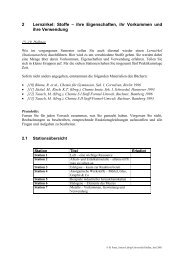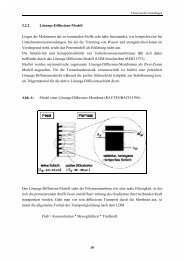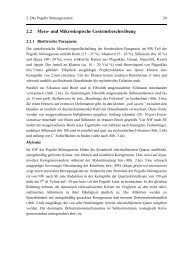Effects of diabaticity on fusion of heavy nuclei in the dinuclear model ...
Effects of diabaticity on fusion of heavy nuclei in the dinuclear model ...
Effects of diabaticity on fusion of heavy nuclei in the dinuclear model ...
You also want an ePaper? Increase the reach of your titles
YUMPU automatically turns print PDFs into web optimized ePapers that Google loves.
where <strong>the</strong> lifetime t 0 <str<strong>on</strong>g>of</str<strong>on</strong>g> <strong>the</strong> DNS is obta<strong>in</strong>ed with <strong>the</strong> c<strong>on</strong>diti<strong>on</strong><br />
t0<br />
0<br />
[Λλ fus (t)+Λη fus (t)+Λλ (t)]dt =1. (6.8)<br />
qf<br />
rate <str<strong>on</strong>g>of</str<strong>on</strong>g> probability Λ The λ (t) through <strong>the</strong> external barrier <strong>in</strong> λ determ<strong>in</strong>es <strong>the</strong> quasi-fissi<strong>on</strong><br />
qf<br />
(<strong>the</strong> decay <str<strong>on</strong>g>of</str<strong>on</strong>g> <strong>the</strong> system). The height B process λ<br />
qf<br />
<str<strong>on</strong>g>of</str<strong>on</strong>g> this barrier m<strong>on</strong>ot<strong>on</strong>ically decreases<br />
with <strong>the</strong> mass asymmetry <str<strong>on</strong>g>of</str<strong>on</strong>g> <strong>the</strong> DNS because <strong>the</strong> Coulomb repulsi<strong>on</strong> <strong>in</strong>creases with decreas<strong>in</strong>g<br />
η and leads to very shallow pockets <strong>in</strong> <strong>the</strong> nucleus-nucleus potential for <strong>the</strong> near symmetric<br />
c<strong>on</strong>figurati<strong>on</strong>s. Therefore, <strong>the</strong> quasi-fissi<strong>on</strong> probability for a symmetric and near symmetric<br />
DNS is much larger than for an asymmetric <strong>on</strong>e. The reacti<strong>on</strong>s c<strong>on</strong>sidered <strong>in</strong> this chapter are<br />
symmetrical or near symmetrical and, corresp<strong>on</strong>d<strong>in</strong>gly, <strong>the</strong>ir <strong>in</strong>itial DNS c<strong>on</strong>figurati<strong>on</strong>s are <strong>in</strong><br />
or near <strong>the</strong> m<strong>in</strong>imum <str<strong>on</strong>g>of</str<strong>on</strong>g> <strong>the</strong> potential energy <str<strong>on</strong>g>of</str<strong>on</strong>g> <strong>the</strong> systems as a functi<strong>on</strong> <str<strong>on</strong>g>of</str<strong>on</strong>g> λ and η. In this<br />
case <strong>the</strong> ma<strong>in</strong> c<strong>on</strong>tributi<strong>on</strong> to <strong>the</strong> quasi-fissi<strong>on</strong> channel comes from <strong>the</strong> <strong>in</strong>itial or near <strong>in</strong>itial<br />
which have approximately <strong>the</strong> same quasi-fissi<strong>on</strong> barrier B c<strong>on</strong>figurati<strong>on</strong>s λ . Indeed, <strong>in</strong> reacti<strong>on</strong>s<br />
qf<br />
with <strong>heavy</strong> <strong>nuclei</strong> <strong>the</strong> experimental data do not show relaxati<strong>on</strong> <strong>in</strong> η and have <strong>the</strong>ir maximal<br />
yields <str<strong>on</strong>g>of</str<strong>on</strong>g> <strong>the</strong> quasi-fissi<strong>on</strong> products near <strong>the</strong> <strong>in</strong>itial DNS [112, 113]. All <strong>the</strong>se facts allow us<br />
to calculate <strong>the</strong> quasi-fissi<strong>on</strong> rate for <strong>the</strong> <strong>in</strong>itial DNS with a Kramers-type expressi<strong>on</strong>. It was<br />
proved <strong>in</strong> calculati<strong>on</strong>s with <strong>the</strong> multidimensi<strong>on</strong>al Fokker-Planck equati<strong>on</strong> that <strong>the</strong> use <str<strong>on</strong>g>of</str<strong>on</strong>g> <strong>the</strong><br />
B value λ<br />
qf<br />
for <strong>the</strong> <strong>in</strong>itial DNS is a good approximati<strong>on</strong> even for asymmetric reacti<strong>on</strong>s [34]. The<br />
quasi-fissi<strong>on</strong> decay process <strong>in</strong> λ determ<strong>in</strong>es <strong>the</strong> lifetime <str<strong>on</strong>g>of</str<strong>on</strong>g> <strong>the</strong> DNS ma<strong>in</strong>ly because <strong>the</strong> barrier<br />
B λ<br />
qf<br />
smaller than <strong>the</strong> barrier Bη<br />
fus is <strong>in</strong> η. The lifetimes t0 for <strong>the</strong> reacti<strong>on</strong>s c<strong>on</strong>sidered<br />
obta<strong>in</strong>ed<br />
are comparable with <strong>the</strong> experimentally extracted characteristic fusi<strong>on</strong> times <str<strong>on</strong>g>of</str<strong>on</strong>g> 10 −21 − 10 −20 s<br />
[114]. S<strong>in</strong>ce <strong>the</strong> effect <str<strong>on</strong>g>of</str<strong>on</strong>g> <strong>the</strong> transient times for stati<strong>on</strong>ary rates <str<strong>on</strong>g>of</str<strong>on</strong>g> probability over <strong>the</strong> fusi<strong>on</strong><br />
quasi-fissi<strong>on</strong> barriers is weak [34] and <strong>the</strong>ir c<strong>on</strong>tributi<strong>on</strong> is <str<strong>on</strong>g>of</str<strong>on</strong>g> <strong>the</strong> order <str<strong>on</strong>g>of</str<strong>on</strong>g> <strong>the</strong> accuracy <str<strong>on</strong>g>of</str<strong>on</strong>g> <strong>the</strong><br />
and<br />
<str<strong>on</strong>g>of</str<strong>on</strong>g> <strong>the</strong> barrier heights, we use <strong>the</strong> <strong>on</strong>e-dimensi<strong>on</strong>al Kramers expressi<strong>on</strong> [115] ( calculati<strong>on</strong> Kr Λ j<br />
i =”fus”or”qf ”andj =”λ” or”η”) which is a quasi—stati<strong>on</strong>ary soluti<strong>on</strong> <str<strong>on</strong>g>of</str<strong>on</strong>g> <strong>the</strong> Fokker-Planck<br />
equati<strong>on</strong> for <strong>the</strong> corresp<strong>on</strong>d<strong>in</strong>g rate <str<strong>on</strong>g>of</str<strong>on</strong>g> probability<br />
j Kr<br />
i Λ =<br />
ωj<br />
j<br />
i B 2πω<br />
⎛<br />
( ⎝ Γ<br />
2¯h )2 +(ω<br />
86<br />
j<br />
i ) B<br />
2 − Γ<br />
2¯h<br />
⎞<br />
exp(− ⎠ Bj<br />
i<br />
i ,<br />
T (λ t) ). (6.9)



